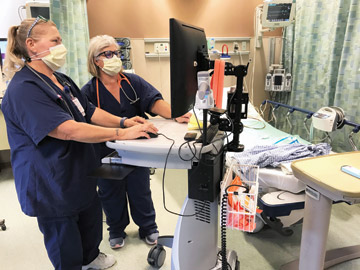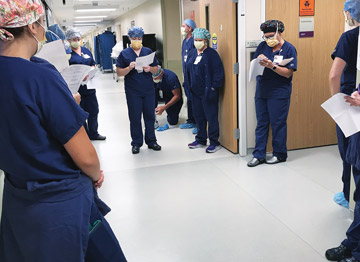Adverse events involving wrong-site, wrong-side and wrong-patient errors are devastating outcomes for surgeons who must live with the mistakes and patients who suffer unnecessary physical scars. These never events persist because of inconsistencies in implementing proven steps to prevent them. Ensuring surgeons perform the correct procedure on the right patient at the intended site requires a multidisciplinary effort and refocusing on the importance of building a culture of safety.
University of Pittsburgh Medical Center (UPMC) facilities are known for adherence to strict patient safety measures, including a series of steps designed to prevent wrong-site surgery. The effort begins long before patients are wheeled into the OR.
- Confirm with schedulers. Surgeons' offices send in surgery reservation sheets, which note patients' names and details about the procedures they're scheduled to undergo. A day before scheduled cases, UPMC staff members call surgeons' offices to review the list of patients and confirm the correct procedures, and then add the information to the surgical schedule in the health system's electronic medical record.
- Perform multiple checks. The reservation sheet is forwarded to the pre-op testing department, where staff verify the correct procedure when they call patients to collect standard health histories. In pre-op on the day of surgery, staff members ask patients to confirm their names, dates of birth, procedures and surgical sites, and make sure each identifier matches what's noted on charts and consent forms. Surgeons arrive to confirm the scheduled surgeries with patients and sign their initials at the correct surgical sites. When patients enter the OR, the circulating nurse asks them to introduce themselves to the surgical team and confirm the procedure they're about to have. Then, during the time out, every member of the surgical team once again confirms the correct surgical site.
During daily morning huddles, the surgical team mentions if patients with the same or similar last names will be undergoing surgery that day so they're more focused than usual in ensuring the correct procedure is performed on the intended patient.
"We warn patients that they'll be asked to repeat their names and confirm their surgical sites multiple times before surgery, and tell them it's done for their safety," says Rhonda Sebastian, MSN, RN, CNOR, clinical director of surgical services at UPMC Horizon and Jameson. "We also never deviate from the process, regardless of the procedures patients are about to have done. Mistakes can happen when the process breaks down."
Excellent communication skills and teamwork play a big part in preventing wrong-site surgeries, says Robert Yonash, RN, CPPS, senior patient safety liaison at the Pennsylvania Patient Safety Authority (PSA). "We urge staff to work as a team and include the patient," he explains. "Though repeatedly asking patients the same questions can irritate them, the constant checks are necessary for error prevention. We need to include their understanding of the procedure being performed."
.svg?sfvrsn=be606e78_3)


.svg?sfvrsn=56b2f850_5)